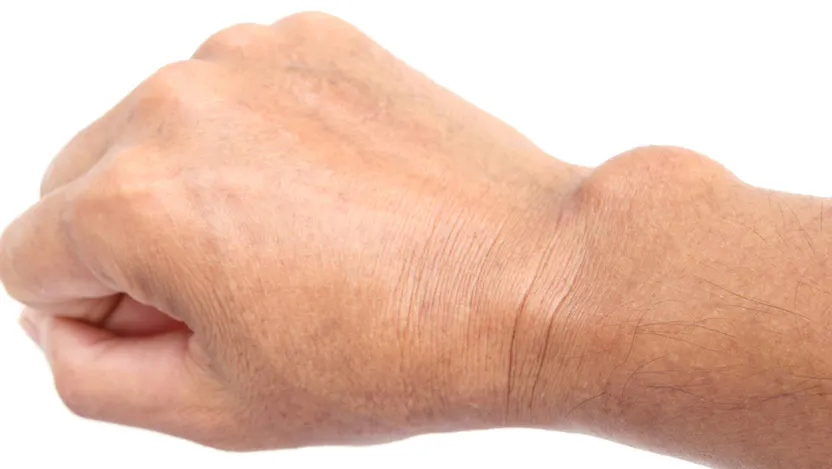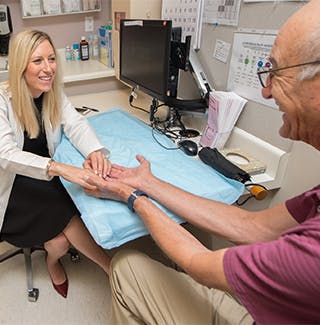What is a ganglion cyst? And other common questions

There are a lot of questions and concerns associated with ganglion cysts, and having a better understanding of what this bump on your wrist is will hopefully alleviate a lot of your worries. Patients often ask me about the causes, risk factors and treatments for ganglion cysts, so I wanted to explain what causes ganglion cysts, how common they are, how they might impact daily activities and what treatment options are available.
What is a ganglion cyst?
If you have an annoying and sometimes painful, lump on your wrist, most likely it’s a ganglion cyst.
Ganglion cysts are usually harmless. The soft sacs of fluid often show up on the top or bottom side of the wrist. The cyst can be the size and shape of a pea, but they can sometimes grow larger overtime.
What causes ganglion cysts?
Symptoms of Ganglion Cysts

Symptoms for a ganglion cyst typically start with a bump that appears under the skin. They can vary in shape and size, with some even growing over time. How the cyst affects your life depends on the location and size of the cyst. Some patients may feel nothing, while other patients may feel irritation, pain or tingling if the cysts is pressing against nerves, ligaments or arteries. Also, as the cyst increases in size, it can make bending or strengthening your wrist difficult and/or painful.
Sometimes ganglion cysts can impact patients’ daily activities. For example, I have many patients in the military who come to see me when these cysts make it too painful to bend their wrists to do pushups. This can obviously have a huge effect on their training.
Are ganglion cysts benign or malignant?
Most people who have a ganglion cyst are worried it’s cancerous, but luckily, that is very uncommon. Most ganglion cysts are benign, however, this can’t be 100% certain unless pathology is performed at surgery.
How to diagnose a ganglion cyst?
To be certain that the mass is a cyst, we can use several diagnostic techniques. The easiest option is transillumination, which is when light is shined on a part of the body to detect any abnormalities. If the light passes through the bump, it is much more likely to contain fluid and be a cyst. Additionally, ultrasound or MRI can also be used to diagnose the cyst.
Ganglion Cyst Treatment
Draining a Ganglion Cyst
There are various ways to treat a ganglion cyst. To help with pain, you can wear a splint at night. A physician can drain the fluid from a cyst with a needle. However, the cyst cavity remains under the skin, and there is a 50% chance that it will fill with fluid again after it has been drained.
Ganglion Cyst Surgery
Surgery is another treatment option available. A surgeon will extract the ganglion cyst from its base and completely remove the cyst cavity. The risks involved in removing a cyst from the top of the wrist are minimal. Extracting a cyst from the bottom of the wrist, however, can be a more complex procedure because of the nearby radial artery. The UChicago Medicine orthopaedic surgery team understands these risks and complexity of these procedures, and has the skill and experience you can feel confident in.

Hand and Wrist Care
UChicago Medicine orthopaedic experts include recognized leaders in the treatment of hand and wrist injuries through nonsurgical and surgical techniques. Our goal is simple, to relieve any pain and discomfort so we can restore your strength, motion, dexterity, form and function.
Learn more about our hand and wrist services.
Jennifer Moriatis Wolf, MD
Jennifer Moriatis Wolf, MD, is a renowned hand surgeon with expertise in the surgical and non-surgical treatment of bone, nerve, tendon and ligament injuries caused by trauma or overuse.
Learn more about Dr. Wolf